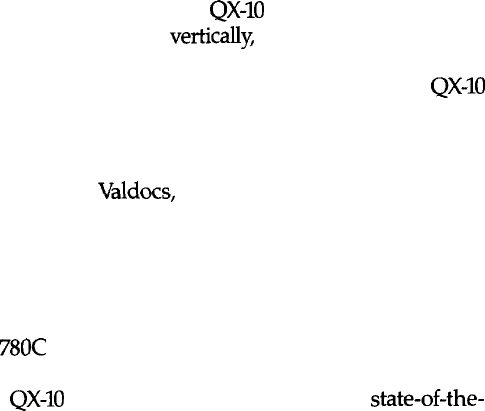
The video screen, in character mode, is 25 lines deep by 80
characters across. When in graphics mode, the screen gains very
fine resolution. (Graphics displays are composed of tiny dots called
pixels-for picture elements-and the
QX-10
screen can display 640
pixels horizontally by 400 pixels
vertical@,
producing a sharp, clear
graphics image.)
Besides displaying both characters and graphics, the
QX-10
monitor has other special features. For instance, every character
can be made to blink, show in reverse video, or increase in light
intensity. The monitor can also zoom and pan like a TV camera.
In addition, when using
Valdocs,
you can use different font styles
such as bold, italic, and bold italic.
Other Features
Besides its
780C
microprocessor chip, advanced software
capabilities, typewriter-style keyboard, and high-resolution video
monitor, your
QX-10
is equipped with a long list of
state-of-the-
art features. Several of these are briefly described here.
ROM
The QX-10 has 8K of ROM, or read-only memory. This is memory
that cannot be altered and which contains instructions for start-
ing up the computer. All ROM patterns are permanently stored.
When you turn the QX-10 OFF, the ROM remains in storage and
performs the same way every time you switch on the unit.
For instance, every time you turn the power ON, the computer
retrieves the instructions to place the INSERT DISKETTE message
on the monitor from the ROM.
Direct Memory Access Controllers
Also contained in the QX-10 system are two DMAs, or direct
memory access controllers. Put simply, these control the memory
space and how it is used. Such jobs as moving data from diskette
to microprocessor or from a port to the microprocessor and back
again are controlled by the DMAs without bothering the micro-
processor. This speeds up operations considerably.
21


















